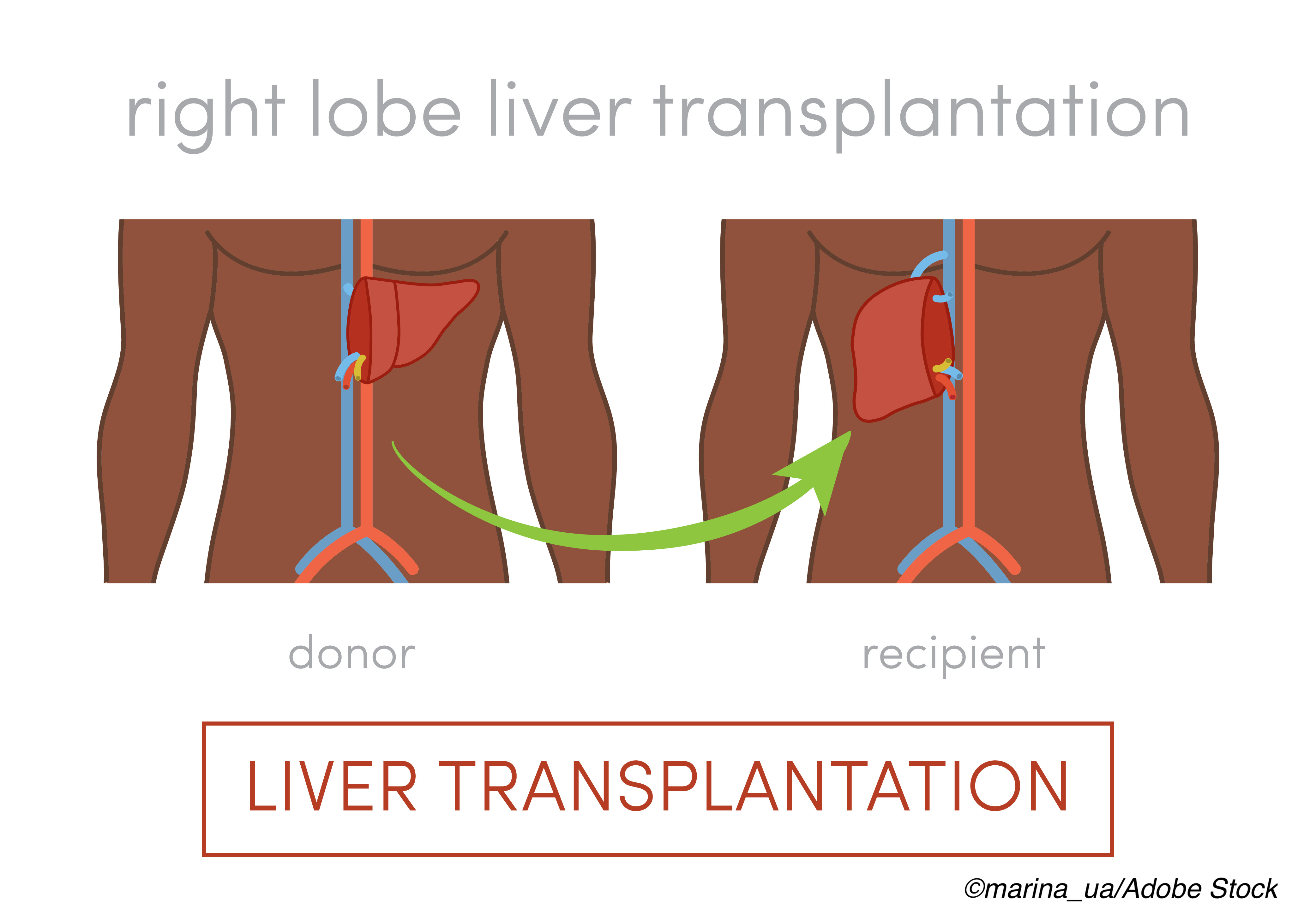Living-donor liver transplant (LDLT) has the potential to decrease the risk of death by 33%-49% for patients with hepatocellular carcinoma (HCC) awaiting a liver transplant, according to researchers of an international study published in JAMA Oncology.
“Living-donor liver transplant (LDLT) offers advantages over deceased-donor liver transplant (DDLT) of improving intention-to-treat outcomes and managing the shortage of deceased-donor allografts. Nevertheless, the debate continues regarding the oncological benefit of an LDLT compared with a DDLT in patients with hepatocellular carcinoma (HCC),” according to Quirino Lai, MD, PhD, of Sapienza University of Rome, Italy, and fellow researchers. They conducted this multicenter study, which had an unusual intention-to-treat design, to assess the potential survival benefit of a LDLT in HCC patients from the time of inclusion on a waiting list.
In total, 3,052 patients (median age at first referral: 58 years; 80.2% men) who were on a waiting list for a first liver transplants at 12 centers throughout Europe were included in the international cohort. In addition, 906 patients (median age at first referral: 59 years; 82.0% men) enrolled at the University of Toronto were included in the Toronto cohort.
Lai and colleagues noted, “This center was selected as a separate cohort because of its capability to perform both complementary LDLT and DDLT.”
They assessed the benefit of live donation both before and after an inverse probability of treatment weighting (IPTW) analysis and found that LDLT was an independent protective factor that brought about a 49% reduction in the risk of overall death in the international cohort (HR: 0.51; 95% CI: 0.36-0.71; P<0.001) during the pre-IPTW analysis in all settings, and reduced it by 33% in the post-IPTW analysis (HR: 0.67; 95% CI: 0.45-0.73); P<0.001).
In the Toronto cohort, LDLT also reduced the risk of overall death by 43% in the pre-IPTW analysis (HR: 0.57; 95% CI: 0.45-0.73; P<0.001), and 48% in the post-IPTW analysis (HR: 0.52; 95% CI: 0.42 to 0.65; P<0.001).
In addition, when LDLT was incorporated into mathematical models, it improved the models’ discriminatory ability.
“This cohort study showed that a potential live donor availability decreased the risk of intention-to-treat death by as much as 49% in patients with HCC who were on a waiting list for a liver transplant. This benefit was associated with the reduction or even elimination of dropout rates. These results were supported by an IPTW analysis and were reported in centers in which both LDLT and DDLT options were equally available. Transplant programs worldwide should be encouraged to expand their live donor programs to manage patients with HCC,” concluded Lai et al.
In an accompanying editorial, David A. Gerber, MD, of the University of North Carolina at Capel Hill, and colleagues applauded Lai et al on their methodology.
“Because a prospective randomized trial is neither ethical nor practical, this well-powered, multicenter, retrospective cohort study by Lai et al successfully overcomes the inherent challenges of selection bias, residual confounding, and confounding by indication in addressing the question of survival benefit for a potential LDLT in patients with HCC,” they wrote.
“With the increase in waiting time for a DDLT and the associated risk of dropout in the current US allocation system for HCC, this study makes an argument for broad accessibility for an LDLT. Efforts to expand the donor pool through LDLT for patients with HCC will ultimately increase the number of available DDLT to help all patients in need of liver transplant. The current regulatory environment, however, has created additional barriers to expanding these programs in the United States,” concluded Gerber and fellow authors.
Study limitations included its retrospective design and potential initial selection bias, the inability to determine the real number of patients who died or had tumor progression due to the absence of available live donors, and the differences observed between patients in eastern and western countries.
Lai and colleagues also noted, “The combination of different experiences, management, and patient- and tumor-related characteristics may compel one to question the validity of the observed results. To minimize these potential limitations, we created Cox proportional hazards regression models with mixed effects, in which the transplant center was incorporated in the model as a cluster specific random-effect variable.”
-
In patients on a transplant center waiting list, living-donor liver transplant (LDLT) was an independent protective factor, reducing the risk of intention-to-treat death in four different settings.
-
LDLT could potentially decrease the risk of death by 33%-49% for patients with HCC awaiting a liver transplant.
Liz Meszaros, Deputy Managing Editor, BreakingMED™
Lai and Gerber reported no conflicts of interest.
Cat ID: 935
Topic ID: 78,935,636,730,188,473,935,192,925




Create Post
Twitter/X Preview
Logout